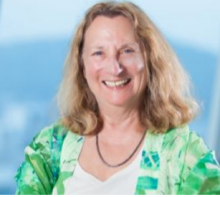MAE Seminar: Flames, Fire Whirls and Blue Whirls - What More Can There Be?

Abstract: A turbulent, self-intensifying, large (~1-2 m) and noisy fire whirl burning a liquid hydrocarbon fuel spontaneously transformed into a small (~few cm), spinning, quiet, blue, soot-free flame that burned all of the remaining fuel. This blue whirl had the shape of a perfect spinning top, closed at the bottom just above the water surface and fanning upwards toward a bright blue rim. There was a translucent purple haze on the top. Further experiments varied the fuel among a wide range of liquid hydrocarbons and showed that the burning structure was always similar, complete and without any soot formation. Temperature measurements showed that the hottest portion was about 2000 K. Recent 3D unsteady numerical simulations, which required development of a suite of new algorithms and physical models, have now revealed the flame and flow structure of the blue whirl. Ongoing simulations can now be used in the search for scaling possibilities and safer paths to transition.
Bio: Elaine S. Oran received a bachelor's degree in chemistry and physics from Bryn Mawr College and both a master's degree in physics and a doctorate in engineering and applied science from Yale University. Her recent research interests include chemically reactive flows, turbulence, numerical analysis, high-performance computing, shocks and shock interactions, and rarefied gases, all with applications to combustion, propulsion and explosions. She is a member of the National Academy of Engineering, fellow of the American Academy of Arts and Sciences, and honorary fellow of the Institute of Aeronautics and Astronautics. She has held positions as the senior scientist for reactive flow physics at the U.S. Naval Research Laboratory (retired 2013) and the A. James Clark Distinguished Professor and Glenn L. Martin Professor at the University of Maryland (2013-2019). She is currently professor of aerospace engineering at Texas A&M University College Station.
Share
Upcoming Events
-
MSE 298 Seminar: Mechano-Electrochemical Phenomena at Ceramic Electrolyte Interfaces
-
MSE 298 Seminar: Innovation In Materials Science - An Industrial R&D Perspective
-
MSE 298 Seminar: Understanding the Impact of Grain Boundary Inclination on Grain Growth Using Modeling and Simulation and Experiments
-
EECS Seminar: Mixed Conductors for Bioelectronics
-
MSE 298 Seminar: Ionic Correlations in Polymer Nanostructures - From Block Copolymers to End-Charged Blends
